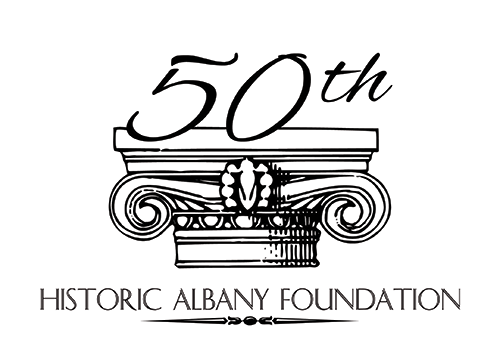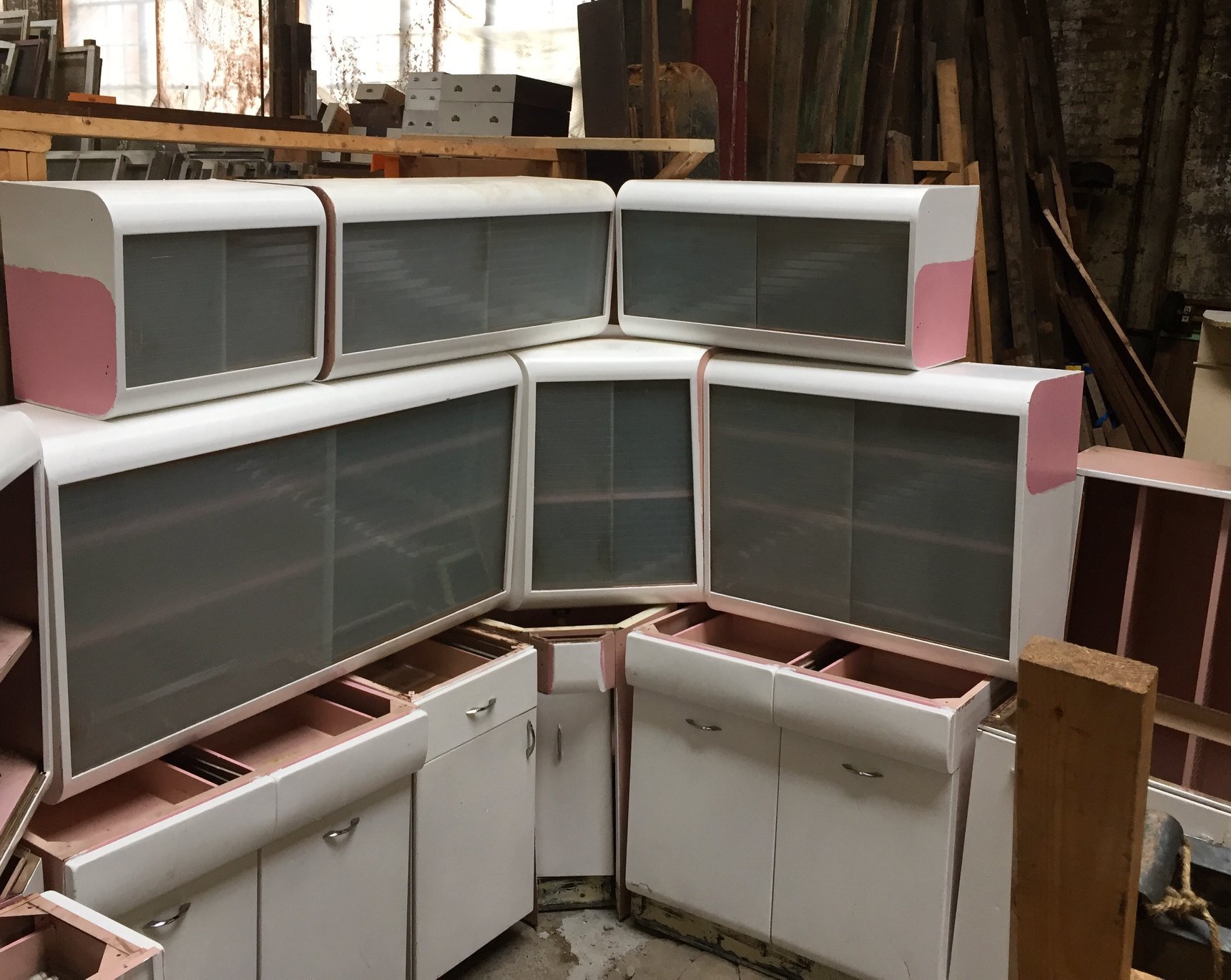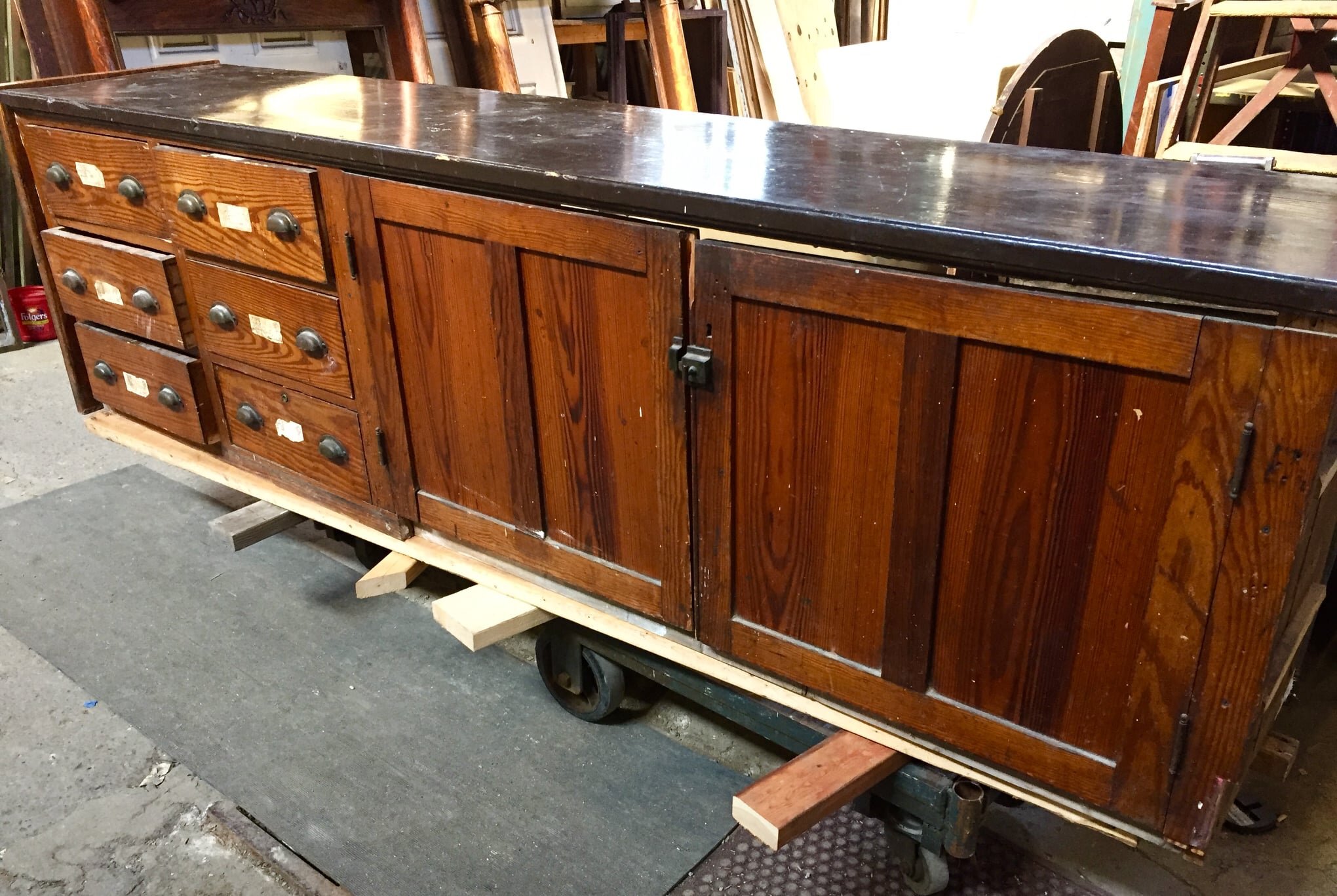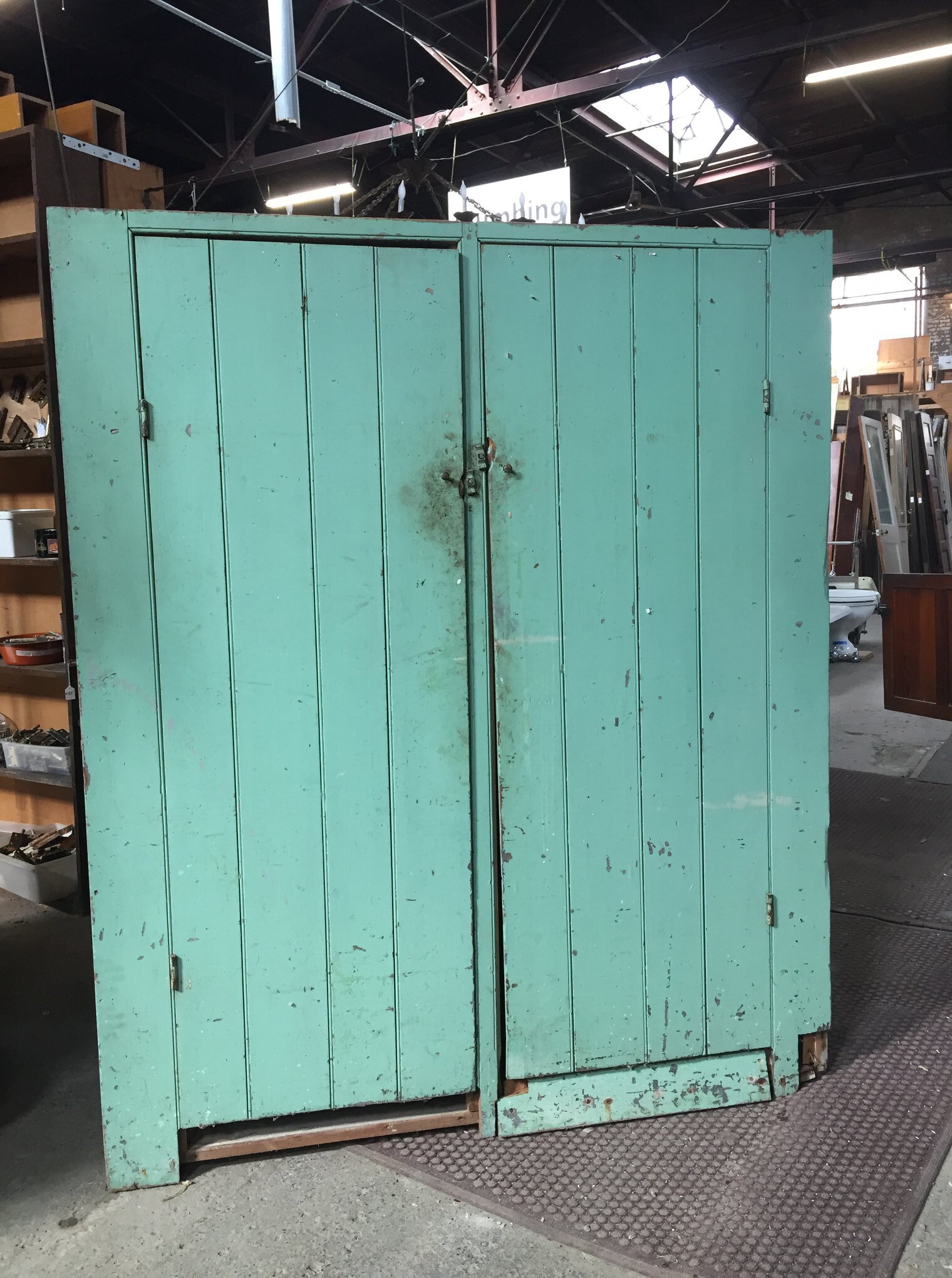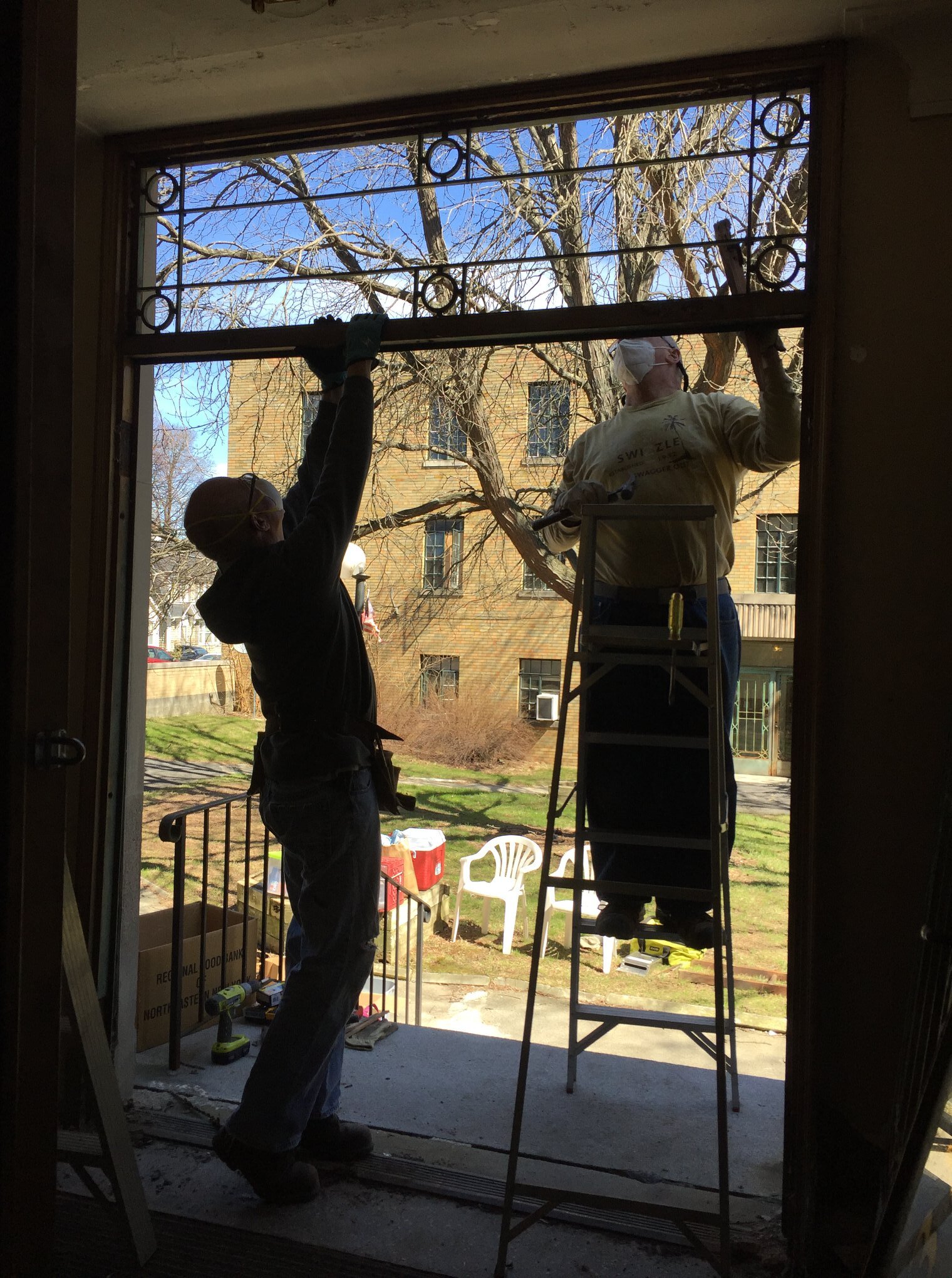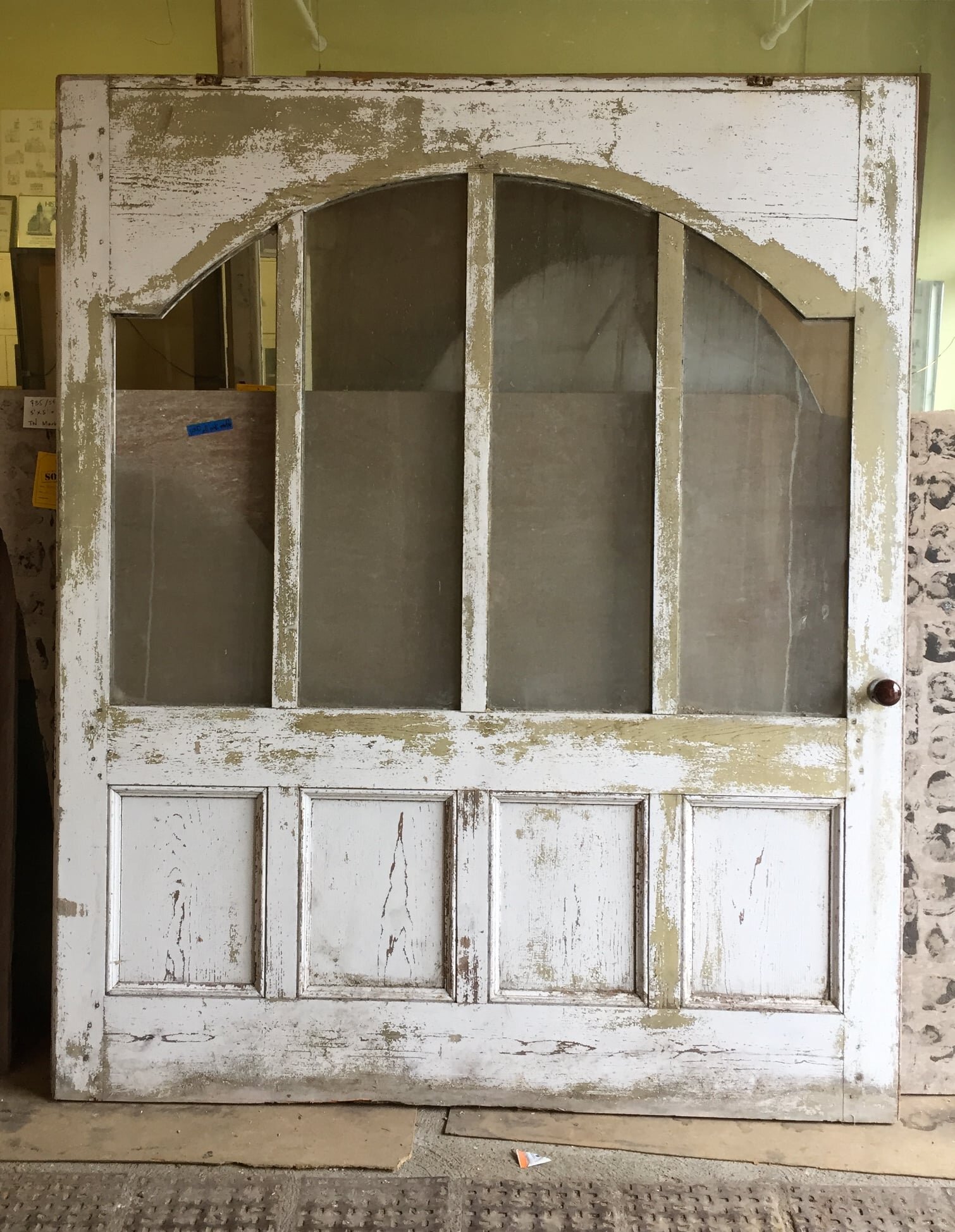The Mohawks and Mahicans in New Netherland: A Look at their History and Architecture
/A depiction of a Native American man watching Henry Hudson’s ship sailing into the New York Harbor. “Edward Moran’s (1829–1901) Henrik Hudson Entering New York Harbor, September 11, 1609.
The city of Albany, New York is located on the ancestral lands of The Iroquoian Mohawks and Algonquin Mahicans.
Native American Nations Within New Netherland
The Dutch in the vicinity of Modern-Day Albany interacted with two Indigenous nations; The Mohawks and the Mahicans. They had been in the region for centuries prior to the arrival of Dutch, English and French colonists in the North East. The Mahicans were located right alongside the boundaries of Fort Orange, to the east while the Mohawks bordered Fort Orange to the west. In the southern borders of New Netherlands, the Dutch in the Hudson valley developed trade relations with the Munsees.
When Henry Hudson sailed over 100 miles up the Hudson River in 1609, he documented his encounter with the Mahican people who lived along the banks of the river. Before the river was named after Hudson, it was called Mahicannituck by the Mahicans. Hendrick Apaumat, a Mahican historian that was born in the Stockbridge Munsee nation, wrote about the history of the Munsees and Mahicans in the Hudson River valley. During the late 17th and lasting through the 18th and 19th centuries, the various Native American Nations in New York State were forced off of their ancestral lands.
During the 17th century, fighting between Native Nations over the fur trade and territorial disputes exacerbated by European colonization led to the Mahicans displacement by the Mohawk Iroquois. By the 18th Century, the many Mahicans had resettled in Connecticut, but some went settled in Southern New York with the Munsees. The Munsees were another group of Native People that the Dutch had encountered during Colonization in Southern New York - The Munsees entered into a treaty with the Dutch that involved the sale of the land that encompasses present-day Manhattan. The Stockbridge-Munsee Nation was formed by both Mahican and Munsee; the two nations are both Algonquin, but the Munsees spoke a dialect of the Lenape language. The Iroquois, or Haudenosanee, were resettled by the United States Government, through various legislative measures that forcibly removed the Iroquois and many other Native people from their land.
This map depicts the Iroquoin and Algonquin nations of the area colonized by the Dutch and English.
Built in 1614, Fort Nassau was the first Dutch settlement built in New Netherlands. It was a trading post where the Dutch conducted fur trade with the Mahicans. Demolished by floods in 1618, it would take six years for Fort Orange to be constructed.
Haudenosaunee: The People of the Long House
The Haudenosaunee of New York State were originally comprised of five Nations. The Mohawks, or Kanien’kehaka, were the easternmost people of the Iroquois and their name meant “People of the Flint” in Iroquois. They were seen as the “Keepers of the Eastern Door;” The Iroquois viewed their confederation as a metaphorical Longhouse that the Mohawks protected. The Oneida or Onayotekaono were the “People of the Standing Stone.” The Onondaga or Onundagaono were the “People of the Hills.” The Confederation also referred to them as the “Keepers of the Central Fire,” because they were the center of the Longhouse. The Onondaga territory was also the capital of the Iroquois Nation. The Cayuga were known as the Guyohkohnyoh, or “People of the Swamp.”The Seneca were known as the Onondowahgah, or “People of the Great Hill.” Like the Mohawks, the Seneca were referred to as the “Keepers of the Western Door.” Seneca warriors protected the western boundaries of the Iroquois territory. The Tuscarora, or Skaruhreh, “The Shirt-Wearing People” joined the Haudenosaunee in 1722 after they had fled North Carolina. The Tuscarora established a shared lineage with the Five Nations dating back centuries before European contact, and they were admitted as the Sixth Nation.
It wasn’t until European contact when the Iroquois people began to shift from living in longhouses to living in smaller cabins meant for immediate family members. After the Revolutionary War, the United States government began to seize Iroquois land and forcibly remove Native people from the land. Reservations were established beginning in the late 18th, early 19th centuries, but boundaries were constantly changed as the population of the United States grew, forcing further removal of Native people. Today, Reservations only represent a small fraction of the ancestral land of Native people.
A Portrait of Wah-Ta-Waso, an Iroquoian actress. Taken in 1898 by Frank . Reinhart.
“Constructed with materials from the immediate surroundings, the buildings were an example of ingenuity and adaptability…”
Mohawk Iroquois Architecture
The Longhouse of the Iroquoian Native Americans reflected multiple aspects of their culture. Constructed with materials from the immediate surroundings, the buildings were an example of ingenuity and adaptability. Longhouse could be upwards of 100 feet long, to accommodate dozens of extended family members. As many as sixty family members would live in the longhouse, with immediate family members residing in their own divided sections.
Unlike the Dutch and other European colonists in North America, the Iroquois had a matriarchal society, meaning familial lineage was traced through the mother, not the father. An elder matriarch was the leader of the longhouse community and was a highly respected individual. When a couple would marry, the husband would live with his wife in her family’s longhouse, but he would also maintain a close relationship with his birth longhouse and his own family. Marriages were important in Iroquois culture and society because they were often used to foster diplomatic ties between families, or clans, within a village as well as with families of other Iroquoian nations. Iroquois women would manage the longhouse alongside other duties including farming and making clothing. Men would provide for their families by hunting, scavenging, and assisting with the construction of longhouses.
In a typical Irqouis Village, there would be around five or so longhouses. Unlike the Mahicans, the Mohawks would establish villages in one central area and would remain for decades until the resources in the area were expended. Then, to allow the area to recover, the village would resettle another location and construct new longhouses for each clan. One Mohawk site that has been studied by archaeologists is the Caughnawaga village, located along the Mohawk River in Montogomery County. The village was built in 1667 and was occupied for over fifteen years until it was demolished in 1693. At the site, twelve longhouses were surrounded by a defensive palisade. Each longhouse varied in size, but averaged about one hundred feet long and twenty feet wide. A majority of the longhouses were intended for family residence, but five of the buildings did not have any evidence of bed structures, leading researchers to believe that these other longhouses served as storage buildings or communal buildings where important meetings took place. Archaeological floorplans discovered at former villages, historical artwork, and oral history traditions have provided researchers with templates to reconstruct longhouses.
A reconstructed model of an Iroqouian Longhouse.
All members of the Haudenosanee resided in Longhouses.
A depiction of the Longhouse of the Haudenosanee Confederation.
Muhhekunneuw: The People of the Continually Flowing Waters.
Unfortunately, due to the lack of archaeological evidence, primary-source accounts, and accurate statistical information, the population estimates for the Mahican people are based on a range of guesses. It is estimated that pre-European contact, the Mahican people controlled an area of land equal to about 17,000 square kilometers or roughly 6,500 square miles. At the higher end of the scale, the population of the Mahicans can be estimated to have been anywhere from 5,300 to 6,400. At the lower end of the scale, the range decreases from about two-to-three thousand people. By the time the Dutch and other European colonists arrived in North America, the population of the Mahicans declined due to warfare and disease; smallpox was arguably the deadliest of the old world diseases, followed by plague. One contemporary account of the Mahican population given by Kiliaen Van Rensselaer in 1634 describes the number as “over 1,600 strong at their time.” This number may have been a reference to the warrior men of the Mahicans and not the entire population. The tract of land sold by the Mahicans to the patroonship in 1630 also contributes to the present-day population estimate.
The Mahican Nation had a turbulent relationship with the European colonists in New Netherlands. Initially, the Dutch traded almost exclusively with the Mahican people, from the construction of Fort Nassau. By the time Fort Orange was created in 1624, following the destruction of Fort Nassau in 1618, however, the Mohawks began to exert a monopoly over the beaver fur trade. By 1628, tensions between the Dutch, Mohawk, and Mahicans in the Albany area culminated in a war. Ultimately, the Mohawk Iroquois controlled the fur trade with the Dutch until the 1650s. By the middle of the 17th century, the beaver population was dwindling and the Mohawk Iroquois began to lose their influence in the economy of the region.
By 1664, the year in which the English conquered New Netherlands, the population of settlements like Beverwjyick (present-day Albany) had grown to nine thousand. Hudson Valley Native People, like the Mahicans, were forced to relocate further. Representatives of the Mahican people met with English officials in 1674-75, ten years following the English conquest of New Netherlands. New York officials reported a conversation between Mahican leaders regarding the first encounters with the Dutch early in the 17th century. “ [The Mahicans] were strong of people and had power. Then the Dutch were but a few, but they let them remain and live in peace.” The English conquest of the region further exacerbated the conflict between the Mohawk Iroquois in the area and the Mahicans. The Hudson Valley Native Americans attempted to enter into a treaty with the new governor of New York, Richard Nicolls. In spite of their attempts to make an equitable peace treaty, the New York officials made a treaty that benefited the Iroquois. “In addition to promising to sustain trade relations as they had existed under the Dutch, English officials insisted that Indians to the South would be covered by peace. But they also agreed to Iroquois proposals that they would not make peace agreements with any who had “murdered one of the princes of the Mohawks…” This policy that the Mohawks presented essentially excluded Mahican people.
By the beginning of the 18th Century, the Mahicans that hadn’t relocated into Connecticut began to settle in Massachusetts. Stockbridge, Massachusetts was established in 1734 by English missionaries as a “Praying Indian Town:” The 18th-century term for villages that converted Native Americans lived in. Both Mahican and Munsee people lived in Stockbridge, and the descendants of these two nations have formed the federally recognized Stockbridge-Munsee community. By the 19th century, the Stockbridge Native community was removed to Wisconsin, where today a 22,000 acres reservation is located in Shawano County.
A Portrait of Etow Oh Koam, one of the four Sachems, or Kings, that visited Queen Anne in 1710.
Schodack Island
Present-Day Schodack was the location of important political meetings hosted by Mahican leaders.
The Mission House
Built by a preacher that coverted Mahican and Munsee people to Christianity in Stockbridge, MA.
The Current Emblem of the Stockbridge-Munsee Mahicans
“Mahican” and “Mohican” are used interchangeably. The Dutch and English colonists used a variety of spellings to represent the Mahican people.
Mahican Architecture
Hudson in his journal described the homes that the Mahican’s dwelled in: “A house well constructed of oak bark, and circular in shape, with the appearance of having a vaulted ceiling.” The Mahicans primarily lived in Wigwams, temporary structures that were disassembled and relocated to follow seasonal farming migration patterns. Archaeologists have discovered around thirty sites that existed pre-European contact in the Hudson River valley that are believed to be Mahican. Archaeologists and historians alike have struggled to differentiate between the Mohawk and Mahican sites, due to the lack of definitive ways to determine ownership of ceramics and other material culture left behind. However, one site with a cluster of settlements that dates back to the pre-contact period has been declared a Mahican site. The Goldkrest site was a camp located on the east bank of the Hudson river South of Albany, near the Papscanee Island. Two building foundations were discovered; One was the outline of an oval structure that was twenty-six by thirty-six feet and is believed to be a wigwam, a house common amongst Algonquian-speaking nations in the North East. The other building was a rectangular structure that was thirteen by thirty-six feet and resembled an Iroquoian-style longhouse.
Mahican and other Algonquin people primarily resided in Wigwams. The term “Wigwam” comes from the word “House” in the Abenaki Nation, from Southern Canada. Wigwams were primarily used by people like the Mahicans due to their tradition of living directly on the river. Unlike the Mohawks and other Iroquoian nations that would build longhouses to stay in an area for many years, the Mahicans would frequently move with the changes of the seasons. As the soil and other natural resources like wood were depleted, the Mohawks would move to another area to settle for upwards of thirty years. Wigwams conformed more appropriately to the Mahican’s hunting and gathering way of life. The Mahican wigwam would typically be up to ten feet tall and would be covered with bark or animal hides. A frame of bent branches and saplings would support the coverings. Frames varied by nations; some wigwams would be constructed in a conical, rectangular, or oval shape. (Hudson in his journal noted that the Mahicans dwelled in wigwams with vaulted ceilings.)
By Andrea Lurie
A model of a conical-style wigwam.
A Reconstructed dome wigwam, similar to the one described by Henry Hudson.
Sources and References for Further Reading
Christine DeLucia. "Fugitive Collections in New England Indian Country: Indigenous Material Culture and Early American History Making at Ezra Stiles's Yale Museum." The William and Mary Quarterly 75, no. 1 (2018): 109-50. doi:10.5309/willmaryquar.75.1.0109.
Kapches, Mima. "The Spatial Dynamics of Ontario Iroquoian Longhouses." American Antiquity 55, no. 1 (1990): 49-67. doi:10.2307/281492.
Mann, Barbara and Fields, Jerry. “A Sign in the Sky: Dating the League of the Haudenosanee” American Indian Culture and Research Journal (1997)
Midtrød, Tom Arne. "In the Shadow of the Longhouse." In The Memory of All Ancient Customs: Native American Diplomacy in the Colonial Hudson Valley, 122-42. Cornell University Press, 2012. http://www.jstor.org/stable/10.7591/j.ctt7zj11.14.
O'Gorman, Jodie A. "EXPLORING THE LONGHOUSE AND COMMUNITY IN TRIBAL SOCIETY." American Antiquity 75, no. 3 (2010): 571-97. http://www.jstor.org/stable/25766216.
Parmenter, Jon. "After the Mourning Wars: The Iroquois as Allies in Colonial North American Campaigns, 1676-1760." The William and Mary Quarterly, Third Series, 64, no. 1 (2007): 39-76. Accessed March 31, 2021. http://www.jstor.org/stable/4491596.
Sellers, Jason R. "History, Memory, and the Indian Struggle for Autonomy in the Seventeenth-Century Hudson Valley." Early American Studies 13, no. 3 (2015): 714-42. http://www.jstor.org/stable/24474862.
Starna, William A. "Mohawk Iroquois Populations: A Revision." Ethnohistory 27, no. 4 (1980): 371-82. doi:10.2307/481733.
Starna, William A. "Assessing American Indian-Dutch Studies: Missed and Missing Opportunities." New York History 84, no. 1 (2003): 4-31. http://www.jstor.org/stable/23183474.
Starna, William A. "Mahican Places." In From Homeland to New Land: A History of the Mahican Indians, 1600-1830, 38-48. LINCOLN; LONDON: University of Nebraska Press, 2013. doi:10.2307/j.ctt1ddr6w0.9.
Snow, Dean R. "Iroquoian Households: A Mohawk Longhouse at Otstungo, New York." In Ancient Households of the Americas: Conceptualizing What Households Do, edited by Douglass John G. and Gonlin Nancy, 117-40. Louisville: University Press of Colorado, 2012. doi:10.2307/j.ctt4cgr80.10.
Wright, J. V. "THREE DIMENSIONAL RECONSTRUCTIONS OF IROQUOIAN LONGHOUSES: A COMMENT." Archaeology of Eastern North America 23 (1995): 9-21. http://www.jstor.org/stable/40914386.
National Museum of the American Indian. “Haudenosanee Guide for Educators.” Smithsonian. https://americanindian.si.edu/sites/1/files/pdf/education/HaudenosauneeGuide.pdf
